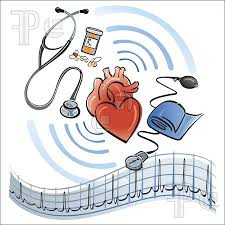During his podcast, History of Educational Technology, Rick Schwier asked class participants to recall their earliest memories of educational technology. I quickly recalled using slides/projector, transparencies (overheads), mannekins, and a cardiac monitor/defibrillator for the first CPR and Advanced Cardiac Life Support (ACLS) courses that I taught as a nurse in the mid 1980’s. The slides/ projector and transparencies re-emphasized/supplemented material found in the course textbook and were used for the theory portion of the courses. The mannekins and cardiac monitor/defibrillator were used in the practical portion of the CPR and/or ACLS course.
The CPR and ACLS courses were designed by the American Heart Association (AHA) and were intended to be standardized. As such, the same instructional materials and technology (except for the cardiac monitor/defibrillator which varied between hospitals) were used to teach ACLS across the globe. In order to “pass” the ACLS course, participants had to achieve a score of 84 on a multiple-choice exam and proficiently lead a team of healthcare providers in the successful resuscitation of a simulated cardiac-arrest victim. As an instructor, I was tasked with “uncovering the material with the students” (Jim Julius), helping them to “think” about how to use knowledge to save a life, and assessing their ability to save a life. As was stated by Jarion Lanier, “If students don’t learn to think, then no amount of access to information will do them any good.”
Fast-forwarding to the present, I still teach ACLS in a face-to-face setting. The design of the course and student learning outcomes are essentially the same as they were in the mid 1980’s except that videos have replaced the slides and transparencies. In addition to the face-to-face course, the AHA began offering the ACLS course online about five years. The practical aspect of the course consisted of a computer simulation of a cardiac arrest and the online learner had to essentially manage the emergency by responding to a series of prompts in a rapid-fire manner. Not surprisingly, students complained that the complexity of the simulated assessment environment (i.e. educational technology) made it difficult for them “think” and therefore save the patient’s life. Rather quickly, the AHA realized that the design of and use of educational technology in the online ACLS Course was ineffective and transitioned it to a blended learning format in which the practical testing of the student is conducted in a face-to-face environment.
